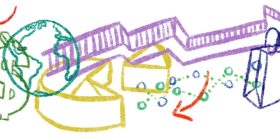Profit
Profit is the pillar that provides a look at the economic implications of the fashion market. Traditional financial indicators will no longer be relied on to determine the long-term performance of the business. To establish a value-driven organisational culture, profit and purpose must be balanced according to Liz Gee.
One of the largest and most significant industries is fashion. It is responsible for the world economy’s “key value-creating industries” (McKinsey & BoF, 2016). Following the McKinsey 2022 forecast, the ready-to-wear industry’s overall sales in 2021 will be between $1.7 trillion and $2.5 trillion (McKinsey, 2022).
There are numerous sectors within the fashion industry, such as marketing and manufacturing. Manufacturing has transformed throughout the years as a result of technological breakthroughs. As a result, manufacturing performance for the fashion sector is far more sophisticated than previously. As indicated in The State of Fashion report 2022, consumers are becoming more aware of sustainability issues and are requesting information about the materials, production techniques, and employees working, encouraging a growing number of businesses to enhance the sustainability of their supply chains.
Covid-19 disrupted all segments of the fashion industry, including manufacturing and distribution. Thus according to McKinsey, Business of Fashion anticipated that non-luxury and luxury fashion sales may vastly improve in the United States and China. At the same time, growth in Europe might be substantial(McKinsey, 2022). These predictions suggest that improvement differs internationally, according to consumers’ patterns of consumption and economic status. During COVID, the online retail market managed to perform well. The online retail sector saw a considerable surge in demand in 2020. People relied on online platforms such as Tiktok live stream channels to meet their consumer demands because everyone was at home during the lockdown. This resulted in a 48% increase in online retail sales in 2020(Mintel 2022). The internet retail business is predicted to shrink and rebalance as individuals become more cautious of their spending habits as we enter the recent cost of living crisis. As a result, firms must be especially creative while advertising their products, as the market is highly saturated.

Source: ONS/Mintel, 2017-22
A creative director establishes a brand’s creative vision by generating concepts and bringing them to life through methods such as installations.
To overcome the divide between creativity and business, creative directors must have the skill of making their artwork appealing. Many customers want to purchase items with a background story. As a result, brands that communicate a meaningful message through their products are more likely to sell as consumers feel their worth during the process.
Reference:
McKinsey&Company (2016) The State of Fashion 2017.
[Accessed 21 October 2022]
McKinsey & Company(2022) The State of Fashion 2022.
Available at : https://www.mckinsey.com/~/media/mckinsey/industries/retail/our%20insights/state%20of%20fashion/2022/the-state-of-fashion-2022.pdf
[Accessed 22 October 2022]
Mintel (2022) Online Retailing- UK- 2022
Available at :
[Accessed 22 October 2022]

